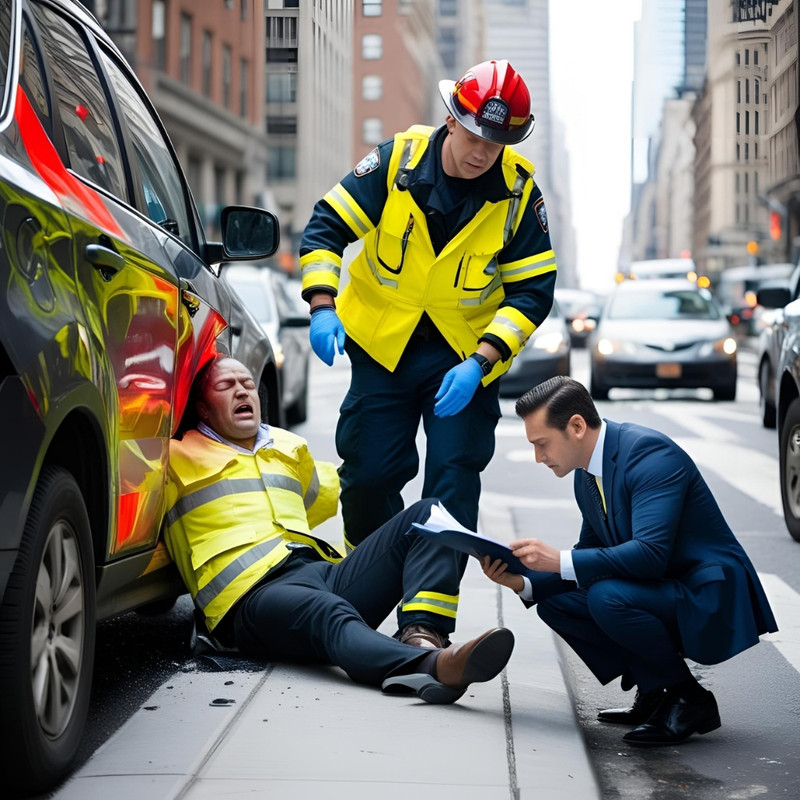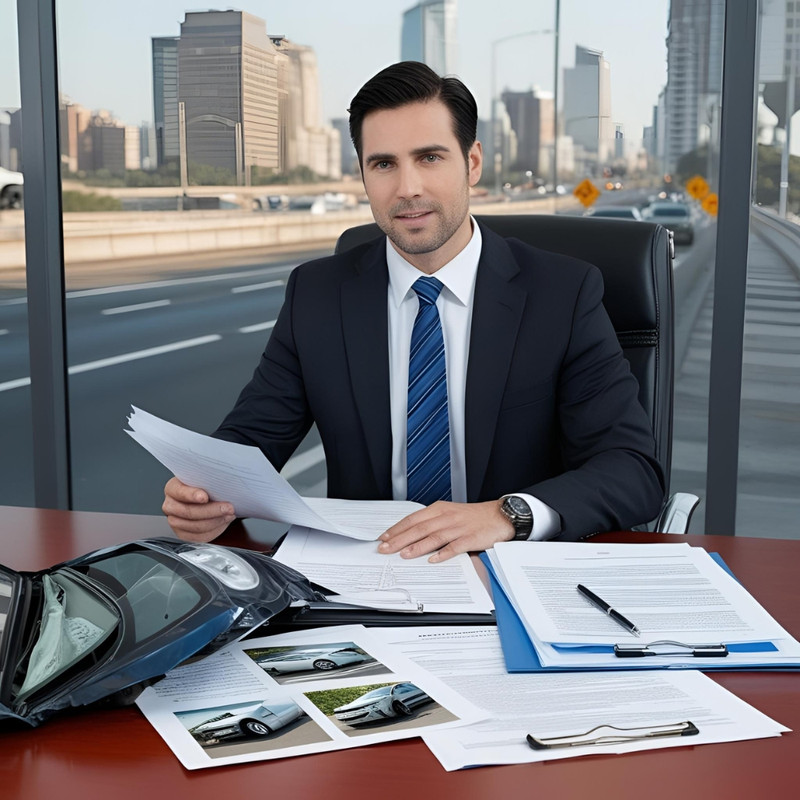Pedestrian Accident Lawsuits: What You Need to Know
Pedestrian Accident Lawsuits: What You Need to Know
Blog Article

Pedestrian accidents can have serious, life-changing consequences. Each year, thousands of pedestrians are injured or killed in traffic-related incidents, and many victims face a long road to recovery—both physically and financially. In such cases, legal action may be necessary to secure compensation for medical bills, lost income, and other damages.
This article provides an overview of how pedestrian accident lawsuits work, what legal rights injured pedestrians have, and the key factors that influence the outcome of these cases.
Understanding Pedestrian Accidents
A pedestrian accident typically involves a person on foot being struck by a vehicle. These incidents are often severe due to the lack of protection pedestrians have compared to vehicle occupants.
Common Causes Include:
- Drivers failing to yield at crosswalks
- Distracted or impaired driving
- Speeding or running red lights
- Poor weather or visibility conditions
- Unsafe road or sidewalk conditions
Pedestrian accidents can happen in urban areas, suburban neighborhoods, or even rural settings—anywhere pedestrians and vehicles share space.
Legal Framework for Lawsuits
When a pedestrian is injured by a vehicle, they may have the right to file a personal injury lawsuit. These lawsuits are usually based on negligence, a legal concept that holds someone responsible when they fail to exercise reasonable care, resulting in harm to another person.
To succeed in a pedestrian accident lawsuit, the injured party generally must prove:
- Duty of care – The driver had a legal obligation to operate their vehicle safely.
- Breach of duty – The driver failed to copyright this obligation.
- Causation – This breach directly caused the pedestrian’s injury.
- Damages – The pedestrian suffered actual harm (medical expenses, emotional distress, etc.).
Steps to Take After a Pedestrian Accident
Taking appropriate action after an accident can help protect one’s health and strengthen any potential legal claim.
- Seek Immediate Medical Attention – Some injuries may not be immediately obvious but could worsen without treatment.
- Call the Police – A formal accident report can serve as important evidence later.
- Document the Scene – Take photos, gather contact information from witnesses, and make note of weather and road conditions.
- Preserve Records – Keep copies of medical records, bills, insurance correspondence, and anything else related to the incident.
Determining Liability
While drivers are often at fault in pedestrian accidents, liability can be more complex. Other potentially liable parties may include:
- Vehicle owners, if they knowingly allowed an unfit driver to operate the car
- Employers, if the driver was working at the time of the accident
- Government entities, if road design or traffic signal failure contributed
- Product manufacturers, in rare cases involving vehicle malfunctions
Every case is unique, and determining liability usually involves a detailed investigation.
Compensation Available in Pedestrian Accident Cases
Victims of pedestrian accidents may be entitled to compensation, often referred to as “damages,” for various types of losses.
Common Categories Include:
- Medical Expenses – Current and future treatment costs, rehabilitation, and medication
- Lost Wages – Income lost due to inability to work during recovery
- Pain and Suffering – Physical pain, emotional trauma, and reduced quality of life
- Permanent Disability or Disfigurement – Long-term consequences of the injury
In some jurisdictions, punitive damages may also be awarded if the driver’s conduct was especially reckless or egregious.
Shared Fault and Comparative Negligence
Sometimes, both the driver and the pedestrian share some responsibility for the accident. For example, a pedestrian may have crossed outside a designated crosswalk or been using a mobile device at the time of the incident.
Many states follow comparative negligence laws, which adjust compensation based on each party’s percentage of fault. The rules vary:
- Pure Comparative Negligence: Damages are reduced by the plaintiff’s percentage of fault, even if it’s high.
- Modified Comparative Negligence: The plaintiff can only recover damages if their share of fault is below a certain threshold (typically 50% or 51%).
- Contributory Negligence: In a few states, if the pedestrian is even slightly at fault, they may be barred from recovering compensation entirely.
Statute of Limitations
Each state has its own statute of limitations, which is the deadline for filing a personal injury lawsuit. This period usually ranges from one to three years from the date of the accident.
Failing to file within the applicable time limit can result in a loss of the right to pursue compensation, regardless of the severity of the injuries.
Challenges in Pedestrian Accident Cases
Several factors can make pedestrian accident cases more complex:
- Lack of witnesses
- Disputed fault
- Insurance coverage issues
- Long-term or invisible injuries
These cases may also involve negotiations with multiple insurance companies, detailed medical records, and expert testimony regarding accident reconstruction or future care needs.
Pedestrian accidents can lead to serious, lasting consequences, and understanding the legal landscape is crucial for anyone involved. While the process of pursuing a lawsuit can be complex, being informed about your rights, responsibilities, and legal options can make a significant difference in the outcome.
Whether determining liability, calculating fair compensation, or navigating state-specific laws, taking the time to learn the basics of pedestrian accident lawsuits is a valuable first step toward recovery and justice.
Dallas Car Crash Lawyer: Get the Compensation You Deserve

Freese & Goss Law Firm is a leading choice for anyone seeking a Dallas car crash lawyer with the experience, dedication, and results to back their reputation. Known throughout Texas for their strong advocacy on behalf of accident victims, Freese & Goss specializes in handling complex car accident claims with precision and care. Their legal team is committed to helping injured individuals recover compensation for medical bills, lost wages, property damage, and pain and suffering caused by negligent or reckless drivers.
As a top-rated Dallas car crash lawyer firm, Freese & Goss takes a client-centered approach—offering personalized legal strategies, transparent communication, and aggressive representation from start to finish. Whether it’s negotiating with insurance companies or fighting for clients in court, the firm’s attorneys are skilled in navigating the legal system to achieve the best possible outcome.
Freese & Goss Law Firm stands out not only for its legal success but for its compassion and dedication to client welfare. They offer free consultations and work on a contingency fee basis, meaning clients pay nothing unless the firm wins the case. If you’re in need of a trusted Dallas car crash lawyer, Freese & Goss Law Firm is ready to stand by your side and fight for the justice you deserve.
Contact Us:
Freese & Goss Law Firm
3500 Maple Avenue #1100, Dallas, TX 75219, United States
(469) 966-0765
https://freeseandgoss.com/personal-injury/
Social Profile:
Map:
Report this page